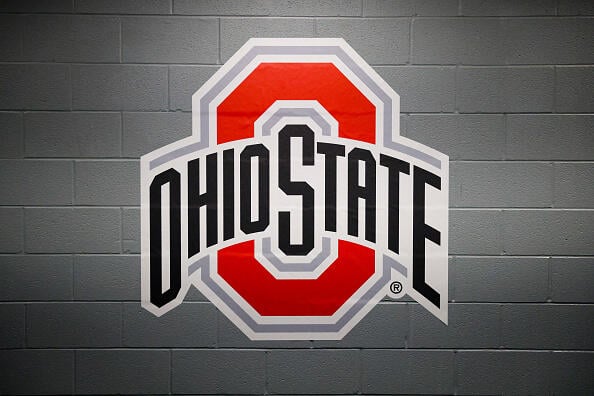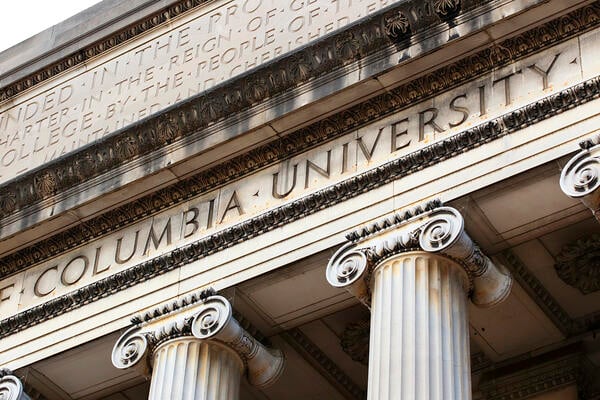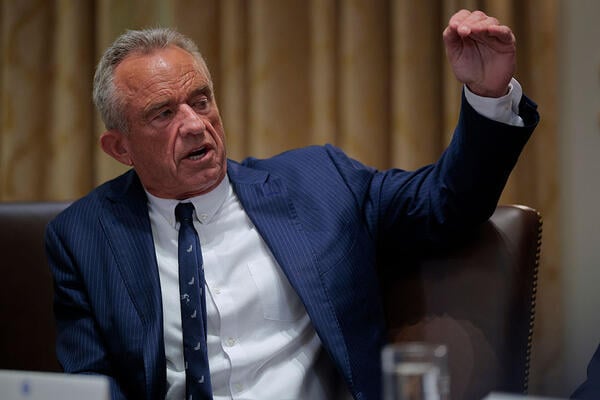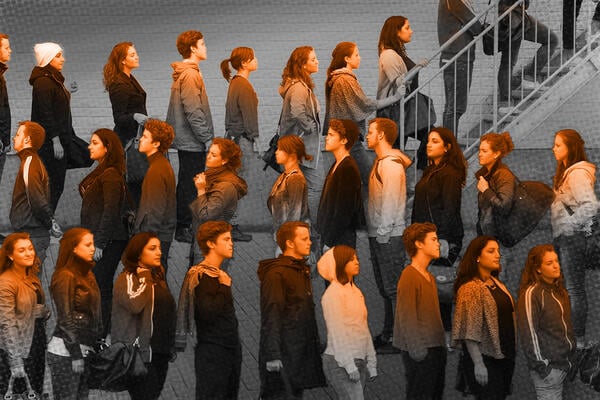Many financial aid advisers are worried that the Trump administration’s latest effort to bolster identity verification in the student aid system could have unintended consequences. Instead of simply catching fraudulent grant applicants and borrowers, some fear that the verification process could also prevent real, eligible students from accessing public benefits.
Education Department officials, however, assure aid advisers that one of their top priorities is to distribute aid smoothly to the students who have a right to it, even as they protect the integrity of the taxpayer-funded programs.
In an electronic announcement published Aug. 12, Federal Student Aid officials said they would be checking the identities of an additional 300,000 aid applicants, on top of the 125,000 students already flagged in June. Some college advisers said they were alarmed by the sheer scale of the requests—especially given what they describe as a very tight timeline.
While aid officers generally support the concept of catching identity thieves, they fear that requiring students to complete the verification process so quickly could delay or even block aid access for some legitimate students, putting them in a financial hole. FSA says the program will eventually be automated, limited to first-time students and managed by agency officials. But at the moment, it’s a manual process that can affect students midway through their program; financial aid officers say it is becoming increasingly complicated and burdensome.
“Schools have been asking for help on how to find these people and prevent fraudulent identities from obtaining Title IV aid, so we’re very supportive of the Department of Ed’s attempts to assume responsibility,” said Karen McCarthy, vice president of public policy and federal relations at the National Association of Student Financial Aid Administrators. “Unfortunately, the timing and how long it took ED to get this off the ground means that it’s August … We are entering, if not already in, the season of really large-scale disbursement. If verification is outstanding, schools may have to hold disbursements for those students.”
The largest unknown seems to be what the consequences of an incomplete or overdue identity verification will be.
The majority of students in the latest wave of verification requests are returning to college and need to verify their identity for the 2024–25 academic year as well as secure their awards for 2025–26. But some were flagged solely for last academic year and in most instances have already graduated or stopped out, making it harder to track them down and complete the process.
Verification results for 2025–26 can be submitted up to 60 days after the data portal opens Aug. 31. At the same time, according to a Federal Register notice, verifications and any other changes to aid applications for 2024–25 must be completed by Sept. 13, making for a busy two weeks for students and aid officers.
Experts have raised a number of questions about whether missing this tight deadline for 2024 could have repercussions. Some fear it could block students from completing future identity verifications or receiving upcoming disbursements; others worry that aid already disbursed in 2024–25 will need to be retracted. Either way, they say, it could have a crippling effect on low-income students.
“There’s going to be a variety of impact,” one financial aid adviser said. “The monetary impact could be anything from a few hundred dollars to 10-, 15- or 20,000.”
However, the Office of Federal Student Aid told Inside Higher Ed that missing that deadline shouldn’t be a problem—except in rare situations.
Verifications for 2024 don’t have to be reported through the portal the same way upcoming 2025 ones do, one agency official said on background. Rather, aid officers just need to verify the student’s identity and determine internally whether a student’s 2024 aid should be awarded; therefore, “there’s no deadline that people are going to hit and fall afoul of,” he added.
And in the “rare” scenario where an institution discovers inaccuracies on a 2024 FAFSA form, the department said, colleges can reach out to FSA to ensure a student’s eligibility is not impacted.
‘We Are Not Blocking Students’
“If anyone has any examples of that Sept. 13 deadline actually being a blocker for students, we can move the deadline back, because we are here to make sure we are not blocking students,” the FSA adviser said. “There is no reason” a 2024 verification delay should affect a student’s ability to complete the 2025 process and have their award disbursed.
Department officials also noted that they have streamlined the process to reduce the administrative burden, cutting steps such as making students provide a statement of purpose or notarizing the verification.
And of the 300,000 aid applicants flagged in the most recent set of verification requests, the external vendor that helped identify them says that at least 50,000 are examples of fraud. The vendor is “very confident” that the other 250,000 are as well, the FSA official said, but the agency is playing it safe and having colleges check each case for good measure before stripping those recipients of aid.
Ellen Keast, the department’s deputy press secretary, said it’s all part of the agency’s “student- and taxpayer-first mentality.”
“We are committed to ensuring that every single dollar is spent on eligible students, not fraudsters,” she said. “This is not about putting a burden on postsecondary institutions; it’s about warning them, before they disburse both taxpayer money and their own, that the ‘student’ in front of them is most likely not a real person.”
But representatives from NASFAA and college financial aid officers are still not clear on how the process will play out.
Caleb Williams, director of enrollment management at Northern Arizona University, said that in addition to the typical verifications that occurred before the Trump administration’s new campaign was announced, selection rates for 2024–25 verification at his institution rose by 54 percent in June and another 13 percent in August. As he understands it, he added, a student “flagged for Identity verification cannot receive aid in any year until the process is completed.”
Meanwhile, Charles Mayfield, the director of financial assistance at Northwest Missouri State University, believes that if an institution misses the September deadline for 2024 verifications, it will not be able to reinstate any of last year’s aid. But it would still be able to complete the 2025 verification and process that year’s aid.
Mayfield hopes that the department will put out clarified guidance to relieve aid advisers’ confusion and explain exactly what the September deadline means, how it will be enforced and what the consequences will be for students. But like the staff at NASFAA, he said his greatest frustration is not the general need for clarification but its timing at the end of an academic year.
“These students have received financial aid for the whole academic year, and now it’s all going to be taken away, and they’re at risk of not being able to enroll for the next academic year,” he said. “In the industry, we all know that students who stop out are much less likely to finish their degree.”
It would be one thing if these concerns and challenges were specific to one college, Mayfair said, but when there are 15 or 20 colleges expressing the same confusion on a Listserv on the same day, the department should be more responsive.
“It feels like when something doesn’t go right, we have to prove to the FSA that it didn’t work the way it was supposed to,” he said. “And until we can outright prove that—using data that’s on their system, that they should already have access to—they won’t acknowledge it.”
McCarthy from NASFAA said that what the department told Inside Higher Ed about 2024 and 2025 verification being handled separately “sounds promising,” but as of Aug. 22 she hadn’t received the same notification from FSA.
Other smaller concerns, such as whether the system for flagging fraud is accurate and if the new portal is functional, also have yet to be addressed, she added.
“It’s an awful lot of work being pushed onto schools,” she explained. “So we want to make sure that it’s useful, beneficial work and that these are actual, really concerning applications, not sloppy work on the Department of Ed which then leads to delays for students.”









